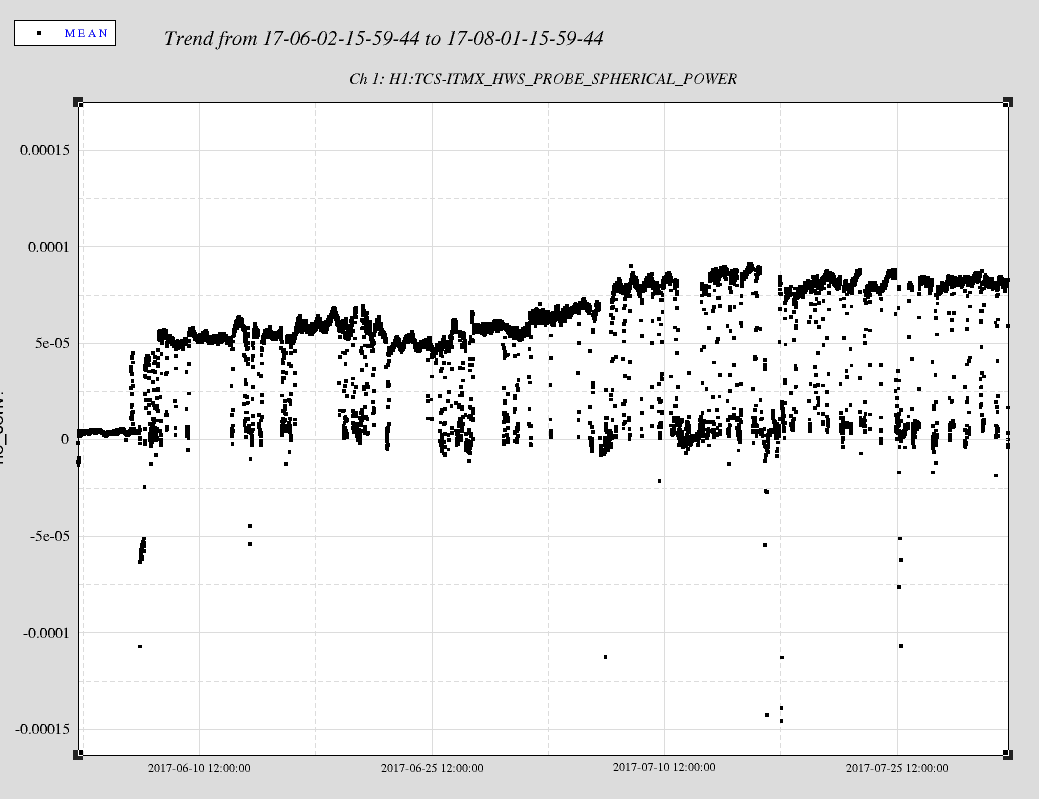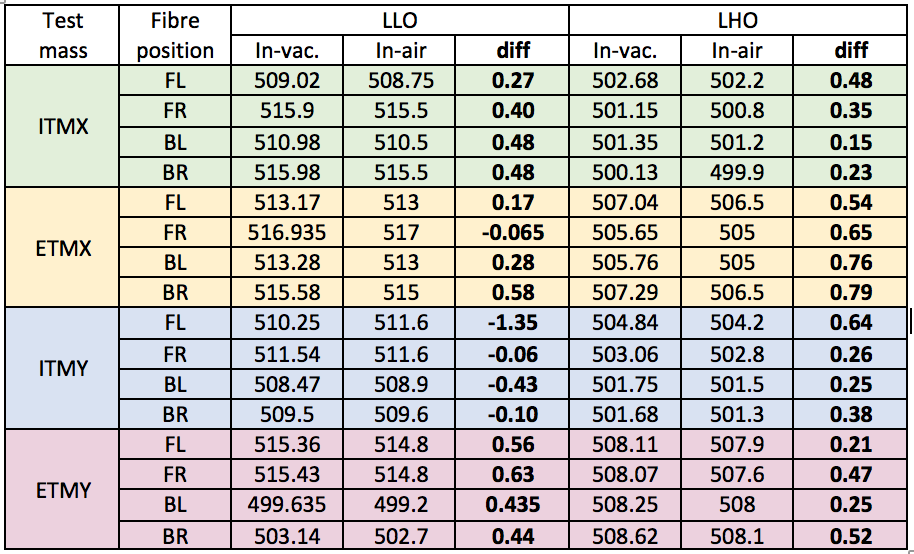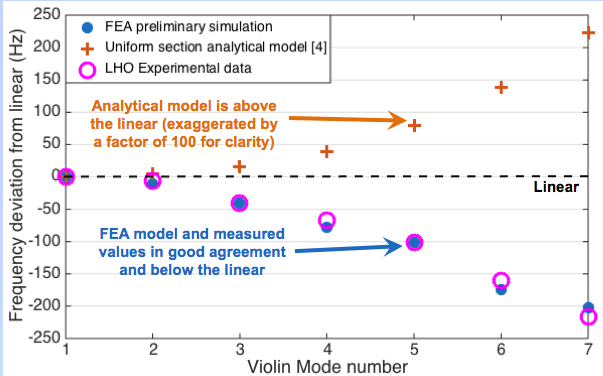On friday Thomas and I ran excitations on all 4 ESDs in order to measure the 4 coefficients in this equation for the force applied by the ESDs (G1600699) Equation 2:
F = α (V_b-V_s)2 +β (V_b+V_s)+ β _2(V_b-V_s)+γ (V_b+V_s)2
The first 2 excitations for each suspension were on the bias path with no signal voltage so that the linear response is:
F = [β+β_2+2(α+γ)V_b] δV_b
The bias path was excited twice, first with the normal bias of 380 V on and second with no bias. Then the script excited the signal path which gives a linear response of:
F = [β-β_2+2(α+γ)V_b+2(α-γ)V_s] δV_s
This path is excited 3 times, once with no DC offset on any electrodes, once with an offset of 7.6Volts on the signal electrodes, and once with the bias at its normal value of 380V.
The first 4 of these measurements allow us to make a complete measurement of all four coefficents, α, β β_2, and γ The fifth measurement is redundant and could be skipped, I used it as a sanity check. I am still worried that I have some signs wrong which are making these results confusing.
| |
ETMX |
ETMY |
ITMX |
ITMY |
| α (N/V^2) |
2.1e-10 |
2.0e-10 |
8e-11 |
5.5e-11 |
| β(N/V) |
-9.9e-10 |
2.0e-8 |
1.0e-8 |
5.6e-9 |
| β_2 (N/V) |
2.8e-9 |
3.2e-8 |
-4.2e-9 |
-8.5e-9 |
| γ |
1.5e-10 |
1.2e-10 |
-4.0e-11 |
-1.2e-11 |
| V_eff = (beta-Beta2)/(2*(alpha-gamma)) |
-31 V |
-75 V |
60 V |
105 V |
All of the scripts needed for taking the measurement and getting the coefficents are in userppas/sus/common/quad/scripts/InLockChargeMeasurements/





























This closes FAMIS7453